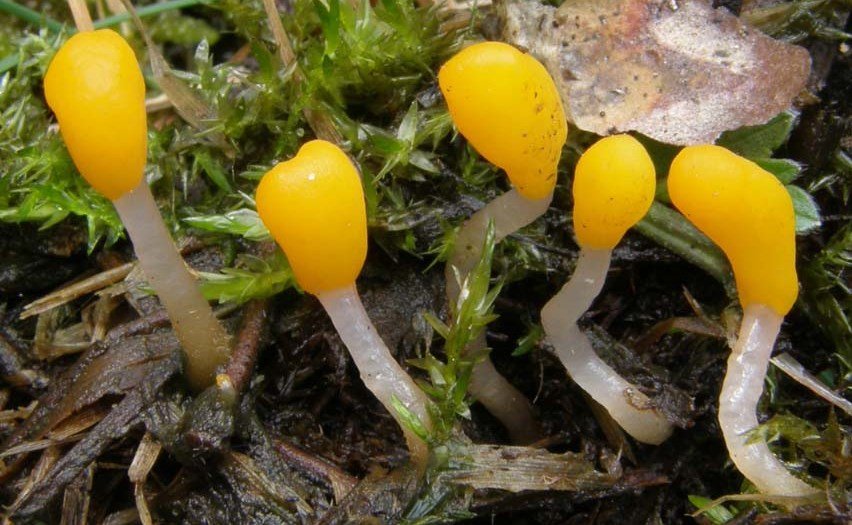Mitrula marsh (Mitrula paludosa)
- Одељење: Асцомицота (Асцомицетес)
- Пододељење: Пезизомицотина (Пезизомицотинс)
- Класа: Леотиомицети (Леоциомицети)
- Подкласа: Леотиомицетидае (Леоциомицетес)
- Ред: Хелотиалес (Хелотиае)
- Family: Hemiphacidiaceae (Hemiphacidia)
- Genus: Mitrula (Mitrula)
- Тип: Mitrula paludosa (Mitrula marsh)
- Clavaria epiphylla;
- Helvella aurantiaca;
- Helvella dicksonii;
- Helvella bulliardii;
- Clavaria phalloides;
- The chaos of billiards;
- Leotia epiphylla;
- Leotia dicksonii;
- Leotia ludwigii;
- Mitrula omphalostoma;
- Norwegian Mitrula;
- Mitrula phalloides.

Mitrulya marsh (Mitrula paludosa) is a fungus belonging to the genus Mitrula and occupying its systematic position in the ordinal list of the Gelotsiev family.
The fruit bodies of the marsh mitrula are ovoid or club-shaped, characterized by a watery-fleshy texture. A mushroom disk of rich orange-yellow color is raised on a stem above the substrate. The height of the stem of the fungus varies from 2 to 4 (sometimes up to 8) cm. The stem itself is grayish-white or yellowish in color, very brittle, almost straight, and can expand downward. Hollow inside.
The spores in their mass are white in color, each of them is a unicellular spindle-shaped element. The spores are uncolored, characterized by parameters of 10-15*3.5-4 µm, and have smooth walls.
Mitrula marsh (Mitrula paludosa) is found by mushroom pickers most often in spring and in the first half of summer. It grows on needles and foliage, small pieces of trees lying on the surface of water bodies. It can also grow in river reservoirs located in the middle of the forest, as well as in swampy areas.
Mitrula marsh (Mitrula paludosa) is widespread on the territory of the European continent, as well as in the eastern part of North America. However, on a global scale, it is considered a rare species of mushrooms. The mushroom is not poisonous, but is not eaten due to its low nutritional value, small size and too thin pulp.
Mitrula paludosa is very easy to distinguish from other varieties of mushrooms by appearance and consistency. In addition, it is difficult to confuse this species because of its habitat. True, sometimes this species is confused with other ascomycetes that prefer to live in humid places:









